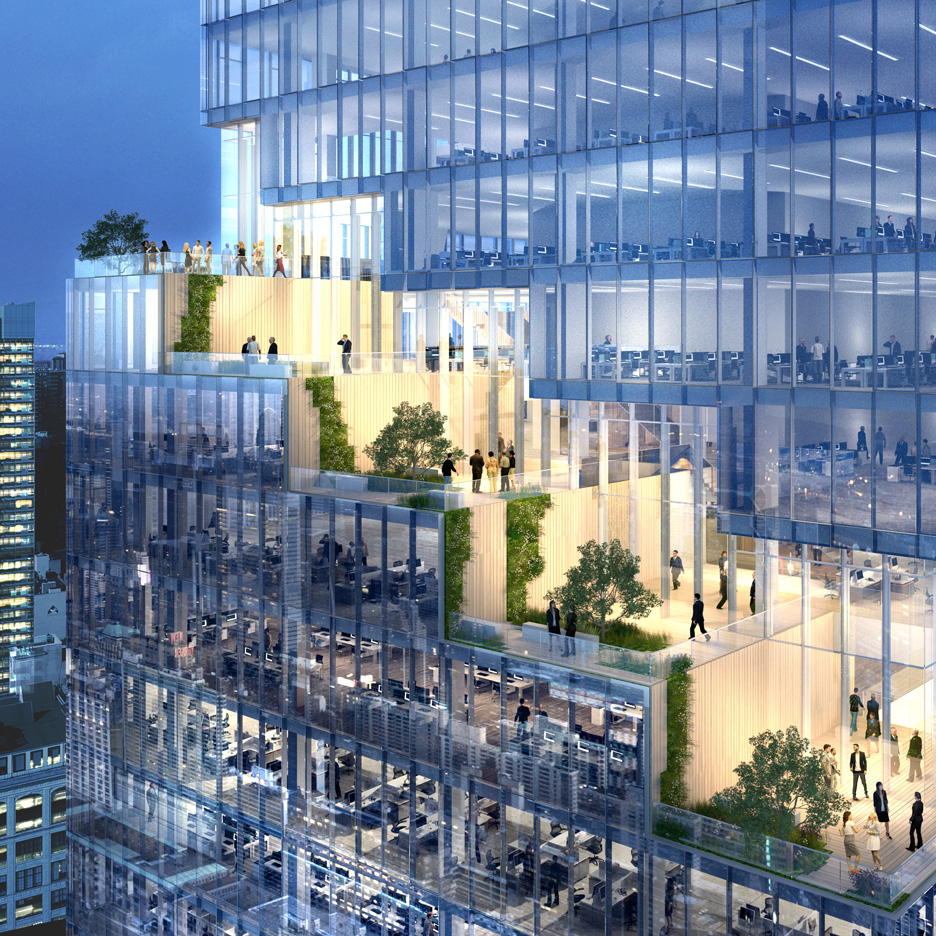Comments update: Bjarke Ingels' firm hit the headlines this week after unveiling its design for a New York skyscraper wrapped by a ribbon of green terraces. Does the proposal mark a new direction for the city's high-rise architecture, or is it simply over-hyped?
BIG spiral: Called The Spiral, BIG's 65-storey glass tower will feature a series of landscaped balconies that form a continuous garden pathway around the building – a progression from the firm's staggered terrace design for Two World Trade Center.
"I'm sorry but [it is] a lame concept that is even worse than Two World Trade Center," wrote Chris. "The reality is the gardens will be unusable and windswept."
"A very dark moment," added Qui-Gon Gin. "Narratives have replaced the art of architecture."
Many defended the design and pointed out that skyscrapers incorporating green spaces might be commonplace around the world in the near future. But others mocked the promotional video.
"BIG's Two World Trade Center tower never convinced me, but this I love," concluded a guest commenter. "I hope it will be executed well." Read the comments on this story »
Golden touch: Zaha Hadid became the first woman to be awarded the RIBA Gold Medal in her own right last week and used the illustrious occasion to defend her architecture, which she believes is "widely misunderstood" by the mainstream.
"History will look kindly on Zaha Hadid," said one commenter. "Her architecture has pushed the boundaries of what people thought conceivable."
Other readers took issue with Hadid's claim her work is driven by architectural progress, rather than personal indulgences.
"The making of architecture is on some level an artistic endeavour, so of course architecture is a medium for personal expression," argued Heywood Floyd. "It is so for all architects." Read the comments on this story »
Uber fail: Uber's head of design resigned the day after the taxi service unveiled a widely criticised new brand identity. The redesign was created by the company's CEO and was instantly compared to an "asshole".
"This is a classic example of what happens when someone who's not a designer thinks it will be fun to have a crack at being one," said Aaron. "Three years and hundreds of iterations later and you end up with something so confused as to be conceptually illegible."
"This is an interesting, yet recognisable branding for the controversial company," added regular contributor The Liberty Disciple. "I neither love it nor hate it."
Some commenters, it should be noted, attacked us for reporting that the design had been compared to a human sphincter.
"Am I the only one that feels the anus reference is bit of cringe-worthy clickbait?" asked David. "Dezeen, you are better than that." Read the comments on this story »
Streets in the sky: Danish architect Bjarke Ingels also hit the headlines when he declared his Copenhagen housing development had succeeded where Alison and Peter Smithson's Brutalist "streets in the sky" concept had failed.
"Let's wait and see if it actually works," urged Atlas, while Paul Lloyd Johnson pointed out that Robin Hood Gardens was praised when it opened, only for it to suffer vandalism and scheduled demolition later on.
"It is not fair to judge two very different projects," added a local resident. "Copenhagen has nothing to do with social housing."
"The failure of [Alison and Peter Smithson's "streets in sky" concept] was a total misunderstanding of social, monetary and spatial interactions and their consequences by architects," agreed a guest reader. "BIG's project succeeds because it is for rich people." Read the comments on this story »

